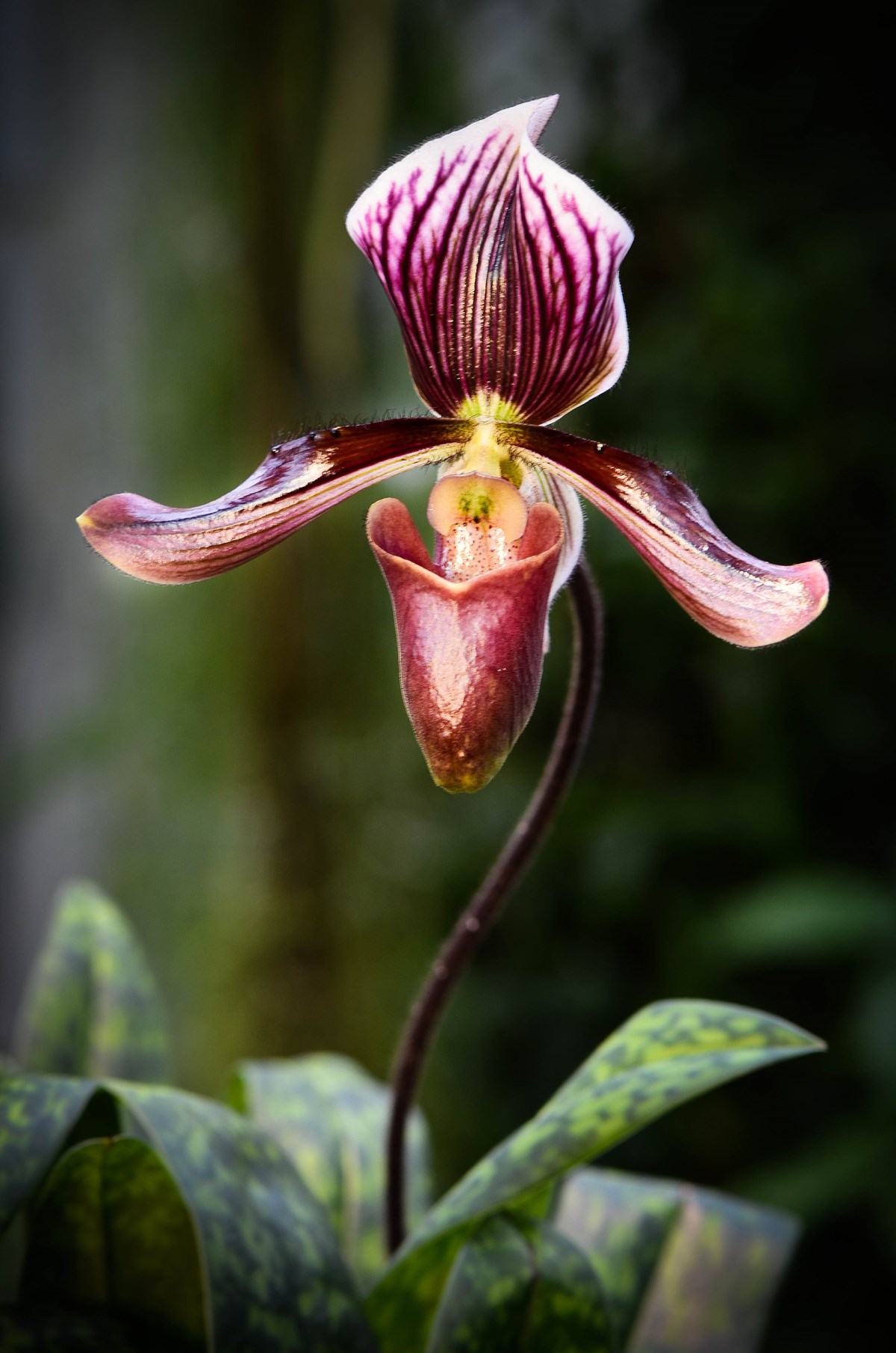Tropical orchids

The Gothenburg Botanical Garden cares for the largest collection of tropical orchids in Sweden, with about 700 different species. Most of the important and well-known genus are represented, like Vanilla, Dendrobium, Cattleya, Bulbophyllum, Paphiopedilum and Disa. Many fascinating but less well-known orchids are also cultivated here.
Orchid greenhouses in Botaniska
Botaniska's orchid collection is housed in four greenhouses with varying climates. The tropical Vanilla greenhouse is warmest and most humid. Its lowest temperature in winter is about 20°C. In the temperate Disa greenhouse, the winter temperature is however only 10 °C. Between these sections are the Cattleya greenhouse and the Dendrobium greenhouse where tropical and subtropical species are cultivated.
The collections
The Botanical Garden's orchid collection was started at the beginning of the 1920s. Plants from the Garden Society Gardens in Gothenburg, the Bergius Botanic Garden in Stockholm, the Botanical Garden in Lund and purchases from various German and Dutch commercial companies constitute the core of the collection. In 1956, the collections were expanded considerably with species collected in Burma's rain forests by the legendary Francis Kingdon-Ward and Ingrid Alsterlund, an assistant from the Gothenburg Botanical Garden.
Four years later, Ingrid made a further expedition to Burma and also to Thailand, bringing back great contributions to the greenhouses. The same year, Gunnar Seidenfaden, a Danish diplomat working in Thailand presented us with a collection of Thai orchids. His main collection can be seen nowadays in the Copenhagen Botanical Garden, whence we have received about 60 specimens during this millennium.
The collection has expanded during the years, partly via our own collecting trips in Asia and America, and partly via intensive contacts with other botanical gardens, private persons and commercial firms the world over.
The aim of the orchid collection
Much of the plant material has a known origin in the wild: when and where the plants were collected and by whom. Because of this, they are very scientifically valuable. Since 1993, all orchids are protected and therefore it is forbidden to collect them in the wild, even as seeds. Scientific research projects may i certain countries be granted collection permits but then only for specific species.
Several species of the South American genus Hoffmannseggella constitute one example. It came to Botaniska a couple of years ago through the Garden's botanist Alexandre Antonelli. Most of the 41 species are so-called microendemics, that is, they are only known through tiny populations and thus under acute threat in the future. Botaniska was granted permission by the Brazilian authorities to cultivate them for reasons of conservation and research.
Valuable teaching materials
From a pedagogical point of view, the orchid collection is very valuable as teaching materials for everyone, from elementary school up to university students, not to mention the generally interested. The great geographical distribution of orchids leads to rich variations in life styles with adaptations to diverse climates. Furthermore, their very varied and often quite extraordinary pollination biology with its fascinating flower structures is truly exciting.
Last but not least, orchids are valued for their amazing beauty. One can walk around enjoying the magnificent flowers and all their different fragrances, experiencing all their loveliness without even thinking about either pollination or scientific research.
Orchids' breathtaking sex life
With their gorgeous flowers and alluring scents, orchids have always captured our human attention. Their specialised adaptations to attract, trick and manipulate insects to attend to their pollination make them even more fascinating.
Each orchid species has its own special pollinators. There are often only a few insect species and in extreme cases only one species that can pollinate an orchid. The pollen is situated in the flower so that it sticks to exactly the right spot on the pollinator. When the next flower is visited, the pollen is deposited on the tiny, limited target surface of the pistil. Everything must fit exactly to a tenth of a millimetre.
Orchids' distribution and life styles
There are orchids on every continent except the Antarctic. They grow in many different environments, from the high fells of the polar regions to the rain forest in the Amazonas. About one quarter of all orchid species are earth orchids. These grow like "ordinary plants" with their roots in the soil.
However, most orchids are epiphytes that exploit other plants as places to grow, often tall trees, but that do not take water or nourishment from their hosts. Epiphytic orchids live in subtropical and tropical environments, and show several adaptations to environments that are poor in nutrients with an uncertain supply of water.
Did you know that...
- The orchid family is the next largest of all plant families with as many as 22,500 described species.
- Orchids probably existed as long ago as the dinosaur era.






